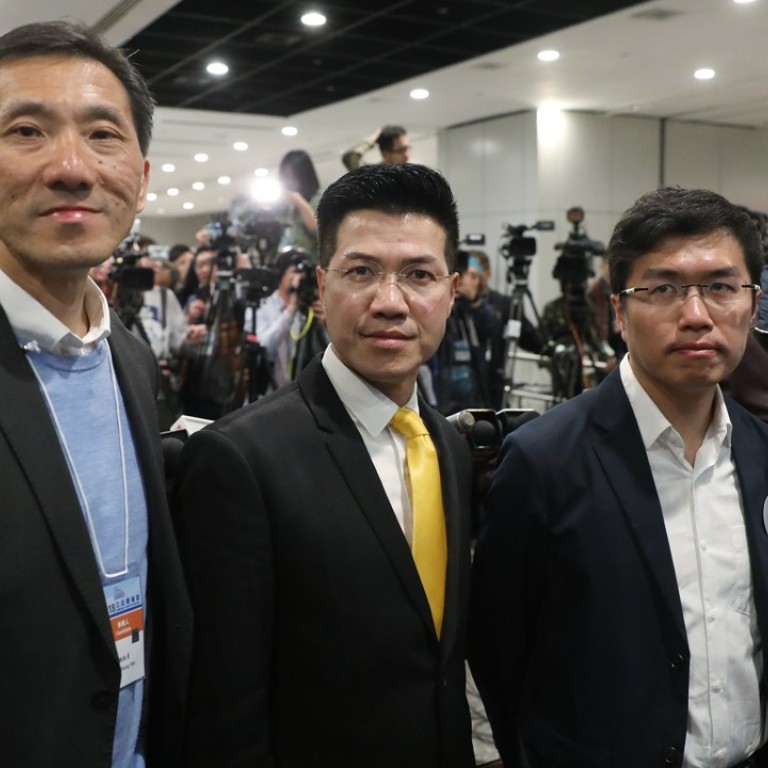
Hong Kong’s pan-democrats might find their missing by-election voters among indifferent young people
John Chan says behind the low voter turnout that cost the pan-democrats dearly in Sunday’s Legislative Council by-election are young people who were too indifferent to the poll to vote
While pan-democrats have blamed the low turnout for their poor showing, they should not overlook one reason behind the decline – the pan-democratic camp is not as united as it appeared to be.
So where are these “missing” voters?
Take Kowloon West, for example. In the 2016 general election, seven key pan-democratic political groups – League of Social Democrats, Civic Party, Association for Democracy and People’s Livelihood, Proletariat Political Institute, Democratic Party, Democracy Groundwork (Lau Siu-lai) and Youngspiration – garnered 159,599 votes, or 57.23 per cent of the 278,871 votes cast in the constituency. Yet in Sunday’s by-election, only 105,056 pan-democratic supporters voted for Edward Yiu. More than one-third of the voters who voted for pan-democratic candidates in that constituency in 2016 did not support Yiu in this by-election. Why?
Voter seeks judicial review over victorious pan-democrat’s Hong Kong election candidacy
Similarly, on Hong Kong Island, eight key pan-democratic players – Path of Democracy, People Power, Labour Party, Civic Passion, Demosisto, Democratic Party, Civic Party and the independent candidate Paul Zimmerman – garnered 190,506 votes of the total 376,577 votes cast on the island in 2016, representing 50.5 per cent of its total turnout. Yet in the by-election, the winner Au Nok-hin received only 137,181 votes. Where were the other 53,325 voters who voted for pan-democratic candidates?
In comparison, the low turnout in Sunday’s by-election seems to have had little adverse effect on the pro-establishment camp. In Kowloon West, in 2016, the pro-establishment camp garnered 102,286 votes, while in the by-election, Vincent Cheng Wing-shun of the Democratic Alliance for the Betterment and Progress of Hong Kong got 107,479 votes, higher than the pro-establishment’s vote share in 2016.
The young pro-independence, pro-self-determination groups did not actively support the pan-democrat candidates in the by-election
On Hong Kong Island, the three major pro-establishment groups, DAB, New People’s Party and Hong Kong Federation of Trade Unions, altogether won 147,837 votes in 2016. In the by-election, Judy Chan Ka-pui of the New People’s Party, who lost to Au, gained 127,643 votes, despite the low turnout.
Before the elections, Dr Chung Kim-wah, a political scholar at Polytechnic University, had observed that many university students were largely indifferent towards the poll. Sunday’s turnout proved his observation to be accurate.
The reason for young people’s indifference is worth exploring. On the face of it, it indicates traditional pan-democrat groups’ failure to connect with the young activists and their supporters, in an election that did not include the young activists.
What happened to the disqualifications backlash? Five takeaways from Hong Kong’s Legco by-election
John Chan is a practising solicitor and a founding member of the Democratic Party in Hong Kong

